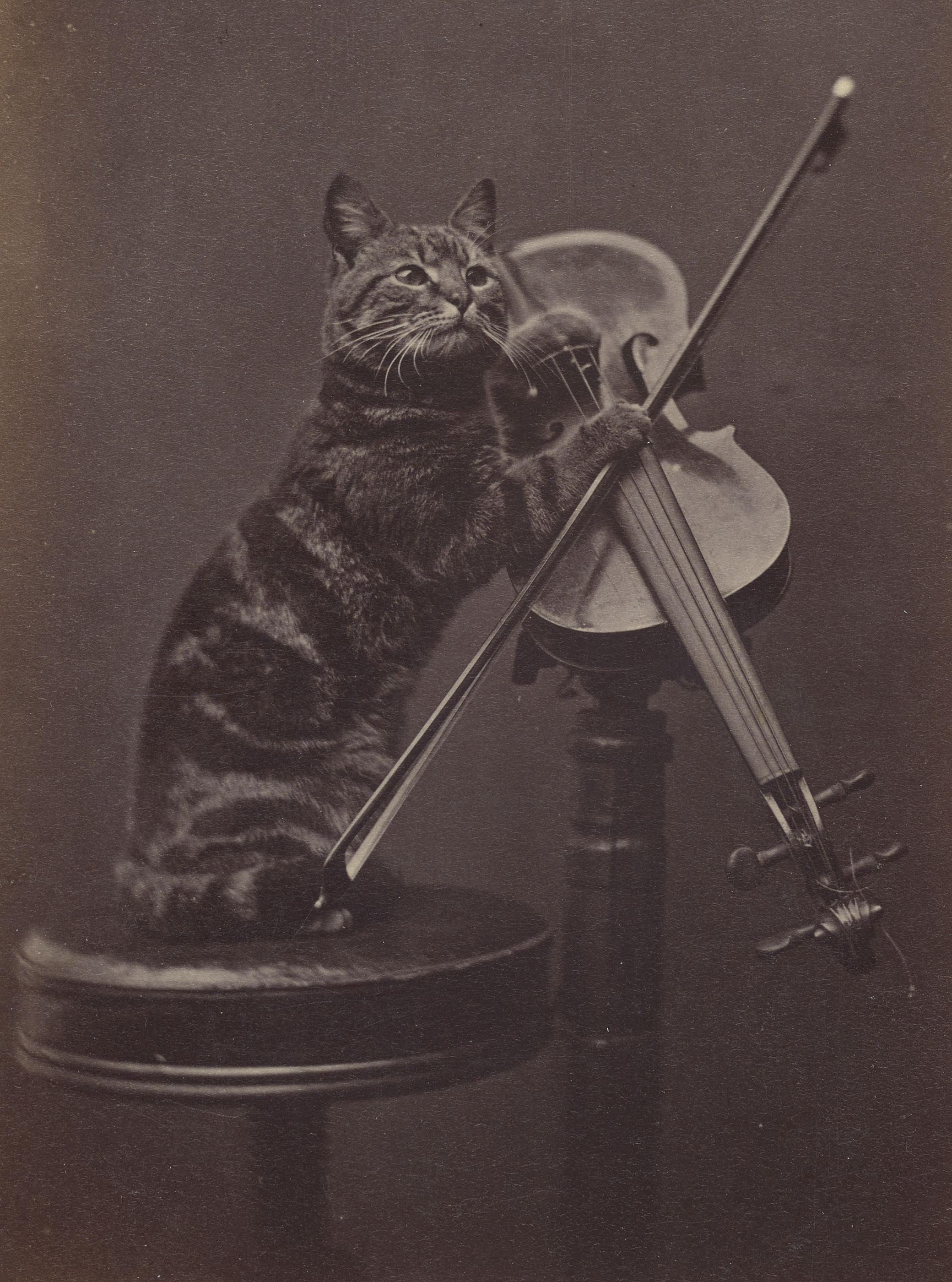
Cat on a stool “playing” a violin, 1872. Photograph by Henry Pointer. The J. Paul Getty Museum.
• “This is a sound that hasn’t been heard in two thousand years.” What does ancient Greek music sound like? (Aeon)
• How can an academic institution preserve #MeToo in the archive? How should it? (NewYorker.com)
• “An attempt to smuggle a Babylonian treasure into Britain has been foiled.” (The Guardian)
• Alexandre Dumas wrote a very long cookbook. (Atlas Obscura)
• Revisiting Pamela Hansford Johnson, described at her death in the New York Times as “one of England’s best-known novelists.” (London Review of Books)
• Debating the ethics of using ancient DNA to understand history. (Undark)
• On The Passing of the Great Race, its language, and the Americans who used it. (The Atlantic)
• Medieval cats: “Perhaps the most famous tribute to a scholar’s cat is the ninth-century poem known as Pangur Bán, named after the cat that inspired it (the cat’s name indicates his soft, white coat).” (British Library Blogs)
• Meet Mary Anning, an early female fossilist. (JSTOR Daily)
• This week in obituaries: Babe Ruth’s daughter, Birch Bayh, a performance artist, an art historian, a bird artist, and the author of Leather Boys.